If you ever find yourself connecting handfuls of resistors to the ground bus of your breadboard, you may consider these SIL-packaged resistors as a time-saving alternative. This Singe In-Line component is actually 5 individual 330 Ohm resistors that share a common terminal on pin 6 (denoted with a black dot).
These work great as current limiting resistors for rows of LEDs and two of these can replace 10 individual wire-lead resistors when hooking up our 10 LED bargraph displays. They also work well as pull-down resistors for DIP switches.
Note: These may come in yellow or black. They are the same product, just a different color, each equally pleasant.
- Datasheet (4606X-1-331LF-ND)
Resistor Network - 330 Ohm (6-pin bussed) Product Help and Resources
Core Skill: Soldering
This skill defines how difficult the soldering is on a particular product. It might be a couple simple solder joints, or require special reflow tools.
Skill Level: Noob - Some basic soldering is required, but it is limited to a just a few pins, basic through-hole soldering, and couple (if any) polarized components. A basic soldering iron is all you should need.
See all skill levels
Core Skill: Electrical Prototyping
If it requires power, you need to know how much, what all the pins do, and how to hook it up. You may need to reference datasheets, schematics, and know the ins and outs of electronics.
Skill Level: Noob - You don't need to reference a datasheet, but you will need to know basic power requirements.
See all skill levels
Comments
Looking for answers to technical questions?
We welcome your comments and suggestions below. However, if you are looking for solutions to technical questions please see our Technical Assistance page.
Customer Reviews
5 out of 5
Based on 1 ratings:
Excellent Choice
These things are awesome! They are very handy and help keep down the breadboard clutter. I wish there were more values available from Sparkfun.

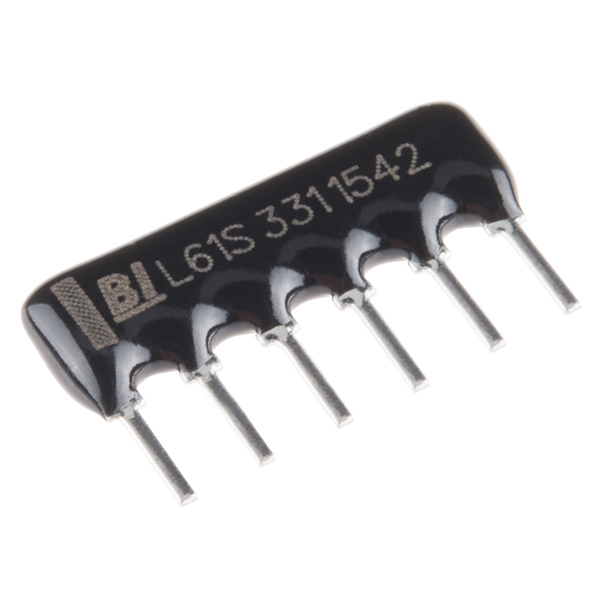
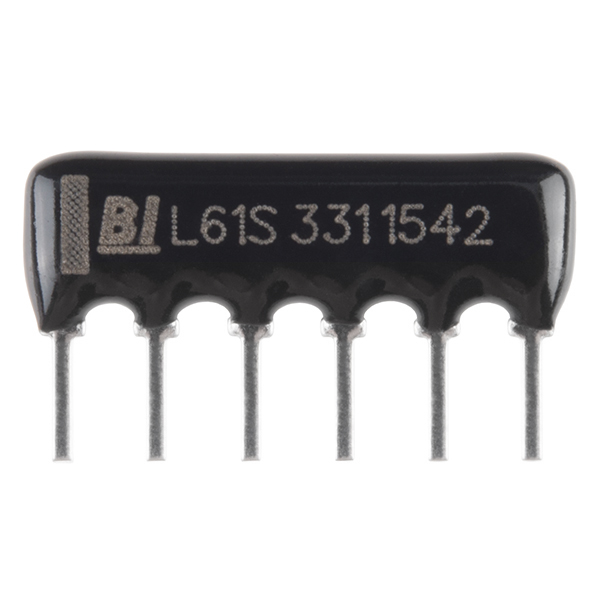
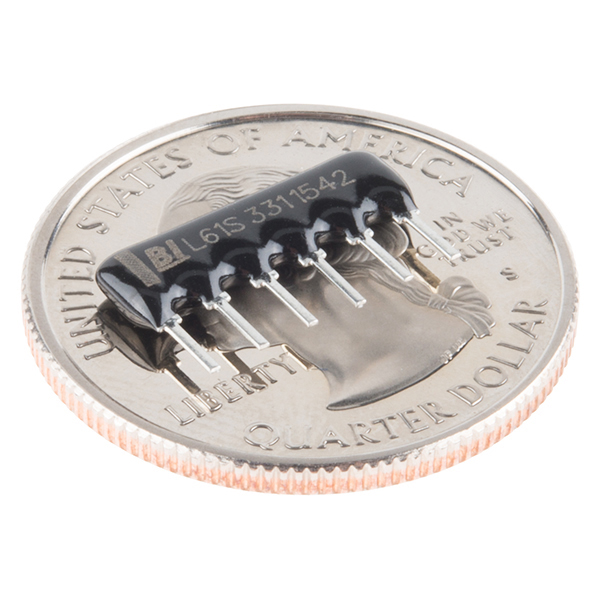
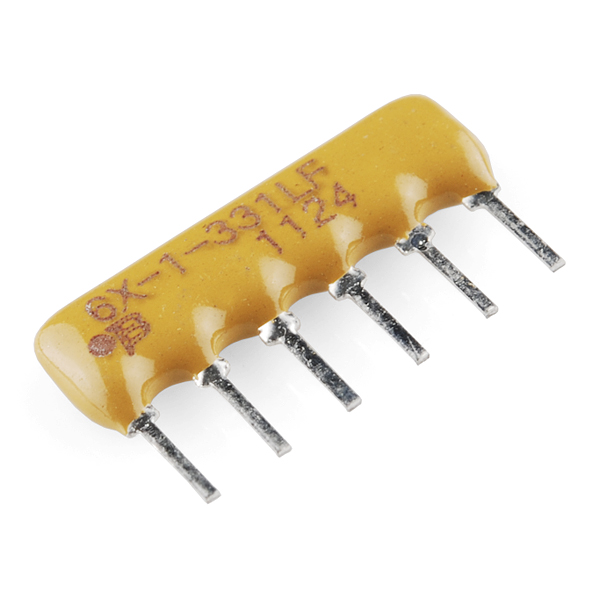

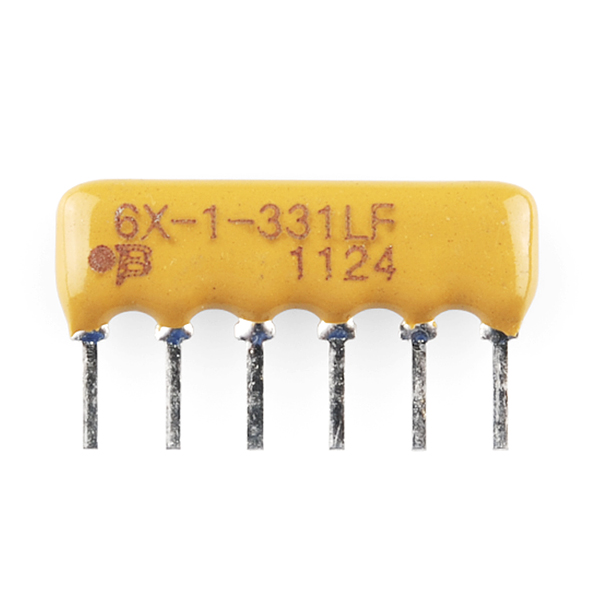
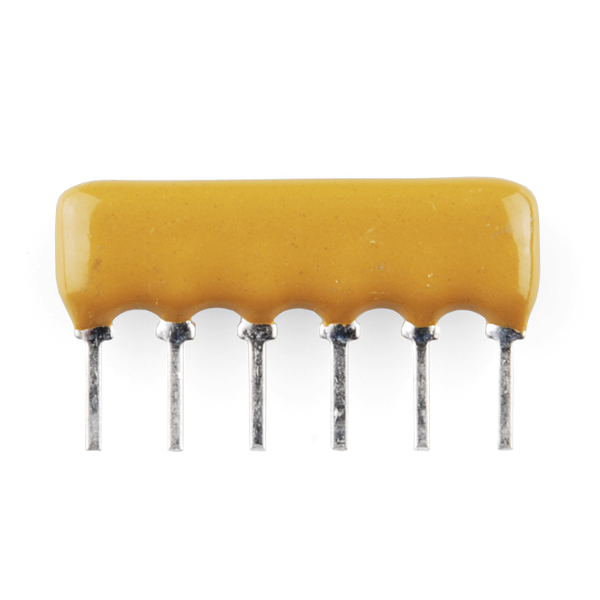
OW! Stupid Singe In-line!
This might sound a bit silly, but does a resistor work the same way if you have it hooked up to ground? I've always done +V -Resistor-LED- V- not V+ -LED-Resistor- V-
Yes, it does. A current flow is reduced along the whole path when it has a resistance at any point.
So, you can easily stick a resistor after an LED for the same result as it would have before said LED.
MUCH LOVE! I've been trying to steal these from various boards, but at $0.50, I'll spend my time doing better things.
Note: Resistance is +-2%
You're very welcome! I found myself trying to desolder these from a board for a project and thought "if I'm doing these and working for SparkFun, I'm sure other people are doing the same..." and I was right.
+/- 2%? And all this time I thought resistance was useless and/or futile!
Please get these back in stock! They would go perfectly with your bar graph displays. That would make it so much easier to hook them up.
Since these only have 5 resistors each, you need two of them for each 10-LED bargraph you want to use. I found these resistor networks which have 10 resistors instead of 5. Tried them out today and they work perfectly.
I'm still learning here, so please help me out when it comes to understanding this. I get that it has one pin that is a common terminal pin, but when it comes to wiring it up, do I just put one lead on either side of the pins or is there another way that I am supposed to do it. Please help me here.
Without sounds stupid...im a bit confused at how these work? like for example you had 6 leds (that each needed a 330ohm resistor for simplicity sake). Do you just share each cathode of the LEDS to the common terminal im guessing?
5 leds. Cathode of each led goes to its own pin (#1-5) on the resistor network. The common pin (#6) goes to ground.
So, I'm guessing the way to use these is put the 5 resistors inline with what you want to resist, and the common pin is the one to tie to ground?
220 Ohm ones??? pweeeeeezzzze??? for the other people???
Until we have them, the other people (?) can get them here.
OH MY GOODNESS FINALLY :D